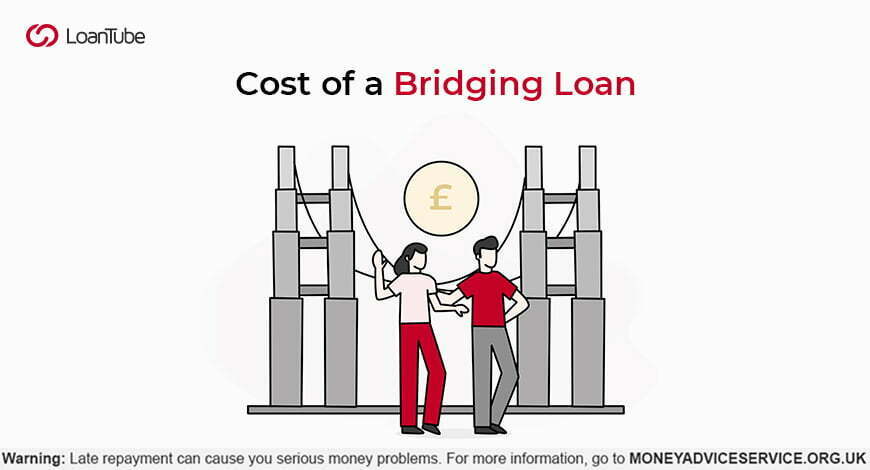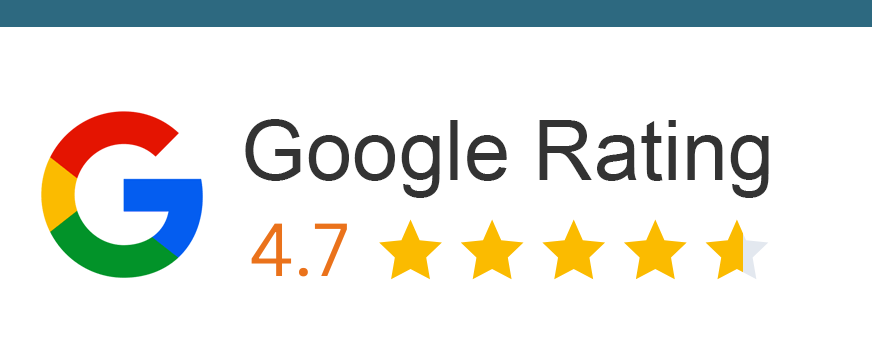Bridging loans are short-term loans that help you tide over a financial urgency. Whether it is a home improvement project or a real-estate investment, if you satisfy the lender’s criteria, you can borrow a substantial sum of money. But how much does a bridging loan cost? Read the article to find out.
Bridging loans are usually short-term loans that help you bridge financial gaps in the purchase of a property. They allow you to procure money to invest in a new property while you await the sale of your existing property.
If you’re planning to borrow a bridging loan, you should evaluate the costs involved in securing one. Read on to find out the fee break-down of bridging loans and how much you can borrow with one.
Maximise your options: Compare and apply for loans below with LoanTube
Apply Filters

Loan Amount
£4000 -
£20000
Norwich Trust
Loan Term
1 -
10 years
4.8/5
Representative APR
31.90%
Minimum Age
21 Years
Representative Example: £12,000 over 66 months, 31.9% APR fixed. Monthly payment £358.22 Annual interest rate 28.01% fixed. Interest payable £11,642.52. Total repayable £23,642.52.

4.8/5
Norwich Trust
Loan Amount
£4000 -
£20000
Loan Term
1 -
10 years
Representative APR
31.90%
Minimum Age
21 Years
Minimum Income
£2000 per month
Representative Example: £12,000 over 66 months, 31.9% APR fixed. Monthly payment £358.22 Annual interest rate 28.01% fixed. Interest payable £11,642.52. Total repayable £23,642.52.

Loan Amount
£5000 -
£100000
Evolution Money Loans
Loan Term
1 -
20 years
4.5/5
Representative APR
28.96%
Minimum Age
18 years
Representative Example: Loan Amount: £20950.00, Loan Term: 85 Months, Interest Rate: 23.00% PA Variable. Monthly Repayments: £537.44. Total Amount Repayable: £45,682.15. This example includes a Product Fee of £2,095.00 (10% of the loan amount) and a Lending Fee of £714.00

4.5/5
Evolution Money Loans
Loan Amount
£5000 -
£100000
Loan Term
1 -
20 years
Representative APR
28.96%
Minimum Age
18 years
Minimum Income
Not mentioned
Representative Example: Loan Amount: £20950.00, Loan Term: 85 Months, Interest Rate: 23.00% PA Variable. Monthly Repayments: £537.44. Total Amount Repayable: £45,682.15. This example includes a Product Fee of £2,095.00 (10% of the loan amount) and a Lending Fee of £714.00

Loan Amount
£1000 -
£10000
1Plus1 Guarantor Loans
Loan Term
1 -
5 years
4.4/5
Representative APR
39.90%
Minimum Age
18 years
Representative Example: Borrowing £3000 over 36 months with a representative APR of 39.9% (variable),the amount payable would be £134.21 a month,with a total cost of credit of £1831.56 and a total amount payable of £4831.56.

4.4/5
1Plus1 Guarantor Loans
Loan Amount
£1000 -
£10000
Loan Term
1 -
5 years
Representative APR
39.90%
Minimum Age
18 years
Minimum Income
Not mentioned
Representative Example: Borrowing £3000 over 36 months with a representative APR of 39.9% (variable),the amount payable would be £134.21 a month,with a total cost of credit of £1831.56 and a total amount payable of £4831.56.
Understanding bridging loans
Bridging loans are common in the real estate industry. Real estate requires hefty investments. If you’re a homeowner, it may not be easy for you to purchase another property without selling your existing home. But real estate opportunities are competitive. By the time the sale of your property goes through, the agents may find a quicker bidder.
A bridging loan helps fill this gap at the very core. You can use the funds from a bridging loan to pay down the token amount for the new property while awaiting the sale of the old one. Once the deal goes through, you can use the proceeds to repay the bridging loan. However, bridging loans are secured loans, so you will require a high-value asset to acquire one.
Types of bridging loans
There are essentially two types of bridging loans:
- Open bridging loans: Open bridging loans do not have a predetermined end date. You can repay this loan whenever you have ample funds. The repayment period usually lasts for a year or may exceed the one year mark in some cases. Open bridging loans are relatively costlier than close bridging loans owing to their repayment flexibility.
- Close bridging loans: These loans have a fixed end date. Most borrowers decide on a tentative date based on the availability of funds. Close bridging loans are typically short-term, lasting for a few weeks or months.
What’s the cost of a bridging loan?
Here’s a cost break-down of bridging loans to help you understand the factors involved in the pricing:
Interest rates
The interest charges on bridging loans usually range from around 0.4% to 2%. But, this interest can vary from one lender to another. Bridging loans are short-term loans meant to tide you over a rough patch, which is why bridging loans are interest-based and not APR-based.
Since it’s the interest that majorly drives the cost of a bridging loan, even minor changes in the interest rate can impact the effective cost of your loan. But the good thing is that bridging loan interest payments aren’t always monthly. Here’s how you can repay the interest on your loan:
- Monthly payments: You pay the interest month to month, and it’s not added to your loan.
- Interest rollover: You pay off the entire interest when the term of your loan ends. This means you won’t have to pay interest every month.
- Retained interest payment: Herein, you borrow the interest for an agreed-upon duration and repay it when the loan term ends.
Some lenders may let you use a combination of these repayment options. For instance, you could pay monthly interest for a set period and then switch to an interest rollover. It would be wise to consider the additional charges associated with bridging loans before opting for one. Careful evaluation will help you borrow responsibly.
Overhead Fees
Bridging loans comprise of other overhead charges apart from the interest. Some of these charges include:
- Arrangement charge: This is the cost of setting up or arranging the bridge loan, usually around one to two per cent of the total loan amount.
- Exit fee: This charge is essentially an early repayment fee. Some lenders charge one per cent of the loan amount if you happen to pay off the loan early.
- Administration charge: This is a charge that pays for the paperwork and documentation that is completed after you settle your loan.
- Legal fee: This is usually a set charge that you pay to a lender to compensate for your loan’s legal expenses.
- Valuation fee: This is to pay the surveyor who appraises your property for the bridging loan.
- Broker fee: This fee is a brokerage or introducer charge if you borrow money through a broker. Brokers look for loan offers and find the most suitable one for you. This fee pays for their effort.
Fixed or Variable Interest?
The interest rate on bridging loans, like most financing options, can either be fixed or variable. Fixed interest stays constant throughout the life of the loan, meaning you’ll repay the same amount each month.
Variable interest, on the other hand, is subject to change as per market inflation. Lenders base the variable interest rate on the BoE base rate (0.10% currently). Payments could go up or down based on the rise or fall in the BoE base rate.
Here’s what affects the rate charged
Several factors have an impact on the rate that a lender sets for you. Here’s what affects your interest rate:
- The type of property you use as collateral
- Loan-to-Value ratio of the property
- The purpose of your loan
- Whether the loan is a first or second charge
- The property’s location
- The loan amount
- Condition of the secured collateral
- The loan’s term
- Your credit history
Alternatives to bridging loans
Bridging loans can ease your financial burden when you invest in a new home while awaiting the sale of your old property, but they can be complex for some to understand. If you’re finding it difficult to secure a bridging loan, here are some alternatives worth considering:
- Second Mortgage: A second mortgage or a second charge mortgage is one that you take out in addition to your primary mortgage. With a second mortgage, you will have a total of 2 mortgages on your property because the second mortgage is a new, independent loan.
- Mortgage refinance: Mortgage refinancing is replacing your existing mortgage with a new one. If you’ve been sincerely paying down the monthly instalments on your mortgage, or other bills, your credit score is likely to have improved. This implies that you can qualify for more competitive interest rates now than you did before. In such a case, refinancing your mortgage can help you effectively reduce the interest that you pay on your mortgage.
- Personal loan: An unsecured personal loan can help you cater to short-notice financial urgencies. Unlike secured loans, unsecured personal loans don’t require you to secure an asset against your loan, which is why the interest rates may be slightly higher. Most loans solve a designated purpose, but personal loans can help you solve various purposes – right from home improvement to debt consolidation.
Find Your Ideal Personal Loan
- Let to buy: You use a let-to-buy mortgage when you rent out your existing property and purchase a new property to live in. You’ll essentially be handling two mortgages at a time. You convert your existing mortgage to a buy-to-let mortgage to rent out your property. Followed by this, you borrow a new mortgage to purchase the second property that you’re planning to live in.
Conclusion
Bridging loans may be a great way to secure money to invest in a second property, but it is imperative to weigh the pros and cons before choosing this option. It is essential to consider all the additional charges payable with this loan. As long as you’re sure of your affordability, this loan can help you climb up the property ladder and build yourself an appreciating asset.


